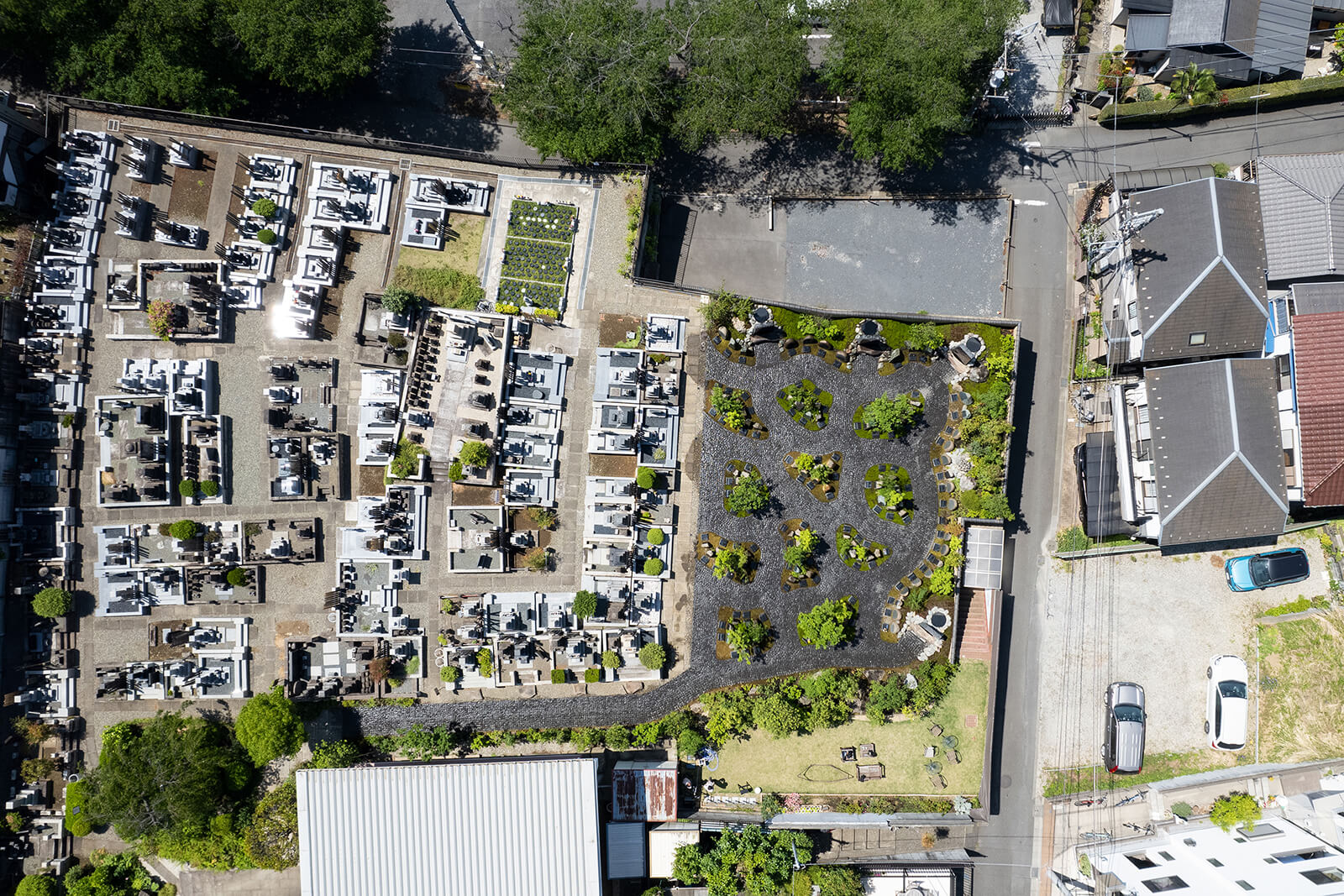The Natural History Museum's reimagined gardens make a Diplodocus-sized impact
by STIRworldJul 19, 2024
•make your fridays matter with a well-read weekend
by Dhwani ShanghviPublished on : Apr 29, 2024
Japan is experiencing a significant increase in its death rate, with 1.5 million deaths recorded in 2022, the highest since the Second World War. While graveyards face space shortages, there are fewer relatives available to carry out funeral rites or maintain graves. As a result, customs around death in Japan, which traditionally included a wake, a cremation, a burial, and periodic memorial services, are transforming, simultaneously stimulating a transformation in cemeterial spaces. Today, a range of alternatives to conventional burials are in practice, which includes balloon funerals, tree burials, or even simply scattering ashes in the sea or mountains, which although secular, are ephemeral.

Located in Fuchu-shi in Tokyo, Kezouin the Fuchu-shi Cemetery manifests a spatial middle path by retaining traditional burial elements that accommodate evolving customs around burials. It therefore constitutes a combination of individual graves for rising single-family households and family graves (called enshrined graves), with the facility to transfer the remains to the family grave at a later date, thus providing generations of the same family a shared space. The cemetery sits on a shared site, almost as an extension to the traditional graveyard to its southeast, on a 300 sqm rectangular parcel.
Conceptualised as a Karesansui, the Japanese architect Yukio Asari of Love Architecture interspersed features of the Japanese rock garden with the graves within, both individual and enshrined. In the absence of water, the Karesansui uses stones, sand, plants, and topography to emulate mountains and rivers, akin to elements in nature evoking the natural world. The design and material palette of the resultant graves, pathways, and landscape thus stems from this concept, manifested as mounds—embodying mountains, and mossy flatlands—embodying the foot of mountains.
The cemetery is divided into two parts, the Hill of Moss and the Plain of Moss, constituting four enshrined graves and 116 individual graves respectively. The five mounds that make up the Hill of Moss organise themselves peripherally, along two sides of the rectangular site. Quite arbitrarily, two cherry trees outside the site establish the arrangement of the first two mounds for the enshrined graves, leading the other three, placed almost equidistantly along the periphery. A pathway develops, supposedly algorithmically from the profile of the mounds, forming a 1.2m wide, spline-shaped lane, which allows efficient two-way human traffic. The Plain of Moss grows organically inwards from the pathway, such that each island constituting clusters of individual graves accommodates two to three trees and maintains a 1.2m wide path between each other, providing access to individual islands.
Each enshrined grave on the Hill of Moss consists of a black, polished granite tombstone, resting against the mound as if placed in a crack within. A seemingly random pile of nature stones appears to cascade around the tombstone, while on the base, near the floor, a nature stone is used as a stand for ritualistic offerings. The remains are buried in a concrete pipe urn, concealed within the mound and behind the tombstone.
On the Plain of Moss, each grave constitutes a headstone, and an ossuary below the flower stand, both carved from natural stone. Below the carving stone, the ossuary houses four urns that contain the remains of the dead. The stone is raised 20mm above the ground, such that the bottom is covered in moss. Additionally, on individual islands, the varying number of graves are stacked organically, alluding to their pre-existence on site as part of the natural landscape.
The Worshiper’s pathway, which branches out to form Y-intersections between itself and the islands, is paved with black granite stones to form ripple-like sand patterns from the centre of the Plain of Moss.
The Kezouin Fuchu-shi Cemetery by the Japanese architecture firm is thus an acknowledgement of the enduring traditions of Japan, offering pragmatic design solutions to the evolving tapestry of funerary customs and religious architecture. By infusing elements of the rock garden with the solemnity of burial grounds, the landscape design throws light on the intimate relationship between the cycle of life and death, and the natural world.
by Aarthi Mohan Oct 07, 2025
At Melbourne’s Incinerator Gallery, a travelling exhibition presents a series of immersive installations that reframe playgrounds as cultural spaces that belong to everyone.
by Anushka Sharma Oct 06, 2025
An exploration of how historic wisdom can enrich contemporary living, the Chinese designer transforms a former Suzhou courtyard into a poetic retreat.
by Bansari Paghdar Sep 25, 2025
Middle East Archive’s photobook Not Here Not There by Charbel AlKhoury features uncanny but surreal visuals of Lebanon amidst instability and political unrest between 2019 and 2021.
by Aarthi Mohan Sep 24, 2025
An exhibition by Ab Rogers at Sir John Soane’s Museum, London, retraced five decades of the celebrated architect’s design tenets that treated buildings as campaigns for change.
 surprise me!
surprise me!
make your fridays matter
SUBSCRIBEEnter your details to sign in
Don’t have an account?
Sign upOr you can sign in with
a single account for all
STIR platforms
All your bookmarks will be available across all your devices.
Stay STIRred
Already have an account?
Sign inOr you can sign up with
Tap on things that interests you.
Select the Conversation Category you would like to watch
Please enter your details and click submit.
Enter the 6-digit code sent at
Verification link sent to check your inbox or spam folder to complete sign up process



by Dhwani Shanghvi | Published on : Apr 29, 2024
What do you think?